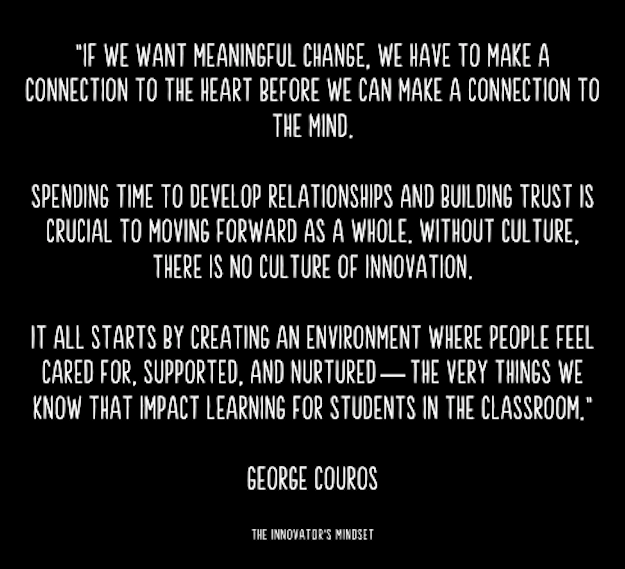I recently had Jason McKenna on my podcast discussing his new book, “What STEM Can Do for Your Classroom: Improving Student Problem Solving, Collaboration, and Engagement,” and he shared the following story with me:
When I first started teaching 5th grade back in 1997, the teacher across the hall from me, Mrs. Willis (pseudonym) was close to retirement. One of the things that I remember the most from Mrs. Willis was that she basically stopped teaching in April. For the last two months of the school year, she had her students rehearse, then perform, a play. Being just out of college, I looked down on this practice. I didn’t have a lot of respect for Mrs. Willis or her experience.
A few years later, a group of colleagues from my school were each running a leg in the Pittsburgh Marathon. We all had shirts on with our school’s name, which led another participant to come over and begin talking with me. He told me he was an orthopedic surgeon and had graduated from our school. He then told me he was a terrible student until 5th grade, and he had Mrs. Willis. Mrs. Willis had changed the trajectory of his life for the better.
I immediately felt regret and shame over how I had viewed Mrs. Willis as a teacher. Evaluating a teacher is hard. Therefore, so many teachers bristle at teacher evaluations that use things like state assessment scores in the evaluation. Since I have left teaching and entered the business world, I have found out that evaluating employees in the business world is also very difficult. It is especially difficult to capture with numbers and data.
But, in our classrooms, we often feel that a letter grade or a percentage is all that is needed for the evaluation of our students at the end of a lesson, activity or instructional unit. Our goal is to make this type of assessment, summative assessment, more student-centered. Therefore, having more opportunities for discussions with students, allowing them to self-report, and giving them a voice in summative assessment can go a long way towards providing accurate and meaningful assessment.
Jason McKenna
If you have a moment, I encourage you to listen to Jason tell the story himself in this snippet from my podcast.
Jason’s story of this teacher and his perception at the time really struck a chord with me.
I thought about this idea as I listened to him share this experience.
What is valued and what is valuable are often two different things.
Think of this scenario in a classroom.
I used to act a certain way when I knew my administrators walked into the classroom because I felt, and it was sometimes emphasized, that a certain level of “compliance” (even though that word was not used outright) from my students was what would be looked for and valued. But I knew that an environment where students felt appreciated and respected, they would not only engage in conversation but sometimes lead it, would be more effective for students in their learning. I am not talking about utter chaos and no structures or routines, but an environment that was a little more “loose” than expected.
When you feel valued and appreciated, you tend to do better.
I thought about this idea today as I was asked about speaking at an event, and they asked if I had a video of me speaking. I shared that it is hard to judge my effectiveness as a presenter based on a video because I don’t focus on speaking to the camera, but I do my best to connect to the people in front of me. To me, that is much more valuable and creates a way better day and experience than some of the best “Ted Talks” out there. Yes, a Ted Talk can definitely have value, but I think about creating experiences that will resonate in a way that no simple “talk” could do. Connecting with people in the room is always way better than connecting with a camera to people who might watch your talk. That video might look good on Instagram, but did it help the people you were brought in to serve?
I remember sitting and listening to a commissioner of education address teachers before I was to deliver a keynote to the same group. As I listened, I agreed with everything he said, and to be honest, I could tell most of the people in the room did so as well. After his talk, I approached him and said, “I loved your talk and vision of what school could be for our students. All I hope is that what you said and what your department does to serve educators and schools line up. What you said today doesn’t really matter if the actions of your department and what you are asking of schools don’t align.”
We often say we want one thing, but “saying” and “doing” are two different things.
So the question is, what do we “say” we value in education, and maybe even life, and what will truly be valuable long-term?
Students can do well on a test, but can they learn long-term on their own?
Have we inspired curiosity in our students, or does it slowly wither away through the process of “school?”
It took me years to start reading again because, although I could read in school, I had no interest. I wasn’t interested in the books that we read as a class so I always connected reading with boredom. It took me until my 30’s to realize I could read for joy.
What was valued was that I got good grades; what was valuable would have been if I had the desire to read after my time in school because of the experience.
What is valued and what is truly valuable aren’t always the same thing.
